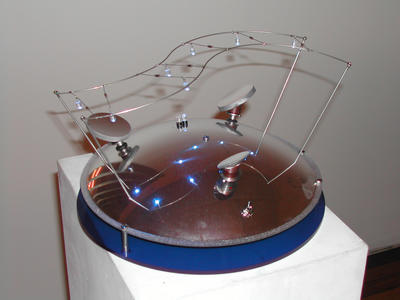From the prototype to the final result, there were changes in design, but the concept kept the same. Looking at other artist's work made me realize that the impression of the piece can be improved by changing the design. Though a finished artifact was not demanded, I am glad I finished everything I wanted to do. The message of the Three wise Monkeys would not have been able to understand if one of the cows does not do what she is supposed to do.
I am quite proud of my work and fell in love with the three funny looking cows.
During the process of my work I felt increasingly confident in the fields of programming, electric circuits and even in construction. Now I would not panic as much when starting a similar project.
Going to Maplin and ordering photo cells or resistors, does not bother me anymore, whereas before I felt a little uncomfortable, especially as a girl.
Actually, I really enjoyed working at the project. Research enabled me to achieve things I expected to be too complicated.
The progress also enables me to judge other artist's work better. Their concept, but in particular their execution of artifacts appears to be easier understandable.
When I look back to where I started the project, I must confess that I have chosen my project, so the costs would not be too high. Also, I decided only to use the Arduino software to be able to have the sculpture separate and independent. Though my workshop has improved, it is far away from being sufficient to create more sophisticated projects.
These were all constraints and I hope that for the next project, I will overcome them at least to a certain degree.
I am looking forward to become inspired for the next project and will continue to invest time into it.








